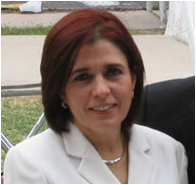As you already know, there are a lot of different theories about second language acquisition and the teaching-learning processes involved. By the end of the course you will have your own point of view.
At the end of this article taken from the Marshall Memo, please comment.
“For
too many years, we have maintained a language-learning strategy that simply
does not work,” say David Young and J.B. Buxton in this Education Week article. “[We] seek to teach language to 100 percent
of the students with a success rate of 1 percent.” Why the dismal results? Because
there’s too much emphasis on grammar and translation and not nearly enough on
learning to speak the language, say Young and Buxton: “If graduates of our high
schools regularly reflected that, after four years of mathematics, they
couldn’t solve for an unknown variable, we would be outraged. But we share a
laugh when someone says, ‘I took four years of a language, but I can’t really
speak it.’”
Of
course there’s more to taking a course in Spanish or French or Mandarin than
oral proficiency – there’s cultural awareness and sensitivity, global
knowledge, and exposure to a new language. But because the typical
instructional platform rarely has enough intensity or time, these courses don’t
deliver oral proficiency or cultural
knowledge.
So what is to be
done? Young and Buxton believe it is possible to have it both ways if we redeploy
the existing world-languages teaching positions, curriculum, and support
resources to prepare students for the world in which they live – while
satisfying the demands of states,
businesses, and parents:
•
Narrow oral proficiency goals to practical, relevant, real-life language
skills, teaching a subset of the current curriculum in greater depth.
•
Teach the other material in a way that helps students understand a country’s
cultural identity and compare it to other countries.
•
Teach global knowledge by comparing and contrasting countries that speak the
target language.
“To
be clear,” say Young and Buxton, “students will not leave these classes with
advanced language proficiency. What they will obtain, however, are the language
skills needed to travel in countries that speak the language, an understanding
of other countries and cultures, and an awareness of the global issues that
impact both those countries and our own.”
What
about the 10 percent of students who want a higher level of oral proficiency?
Dual-language instruction is best for them, say the authors. These classes make
the target language the vehicle of instruction in all subjects, and studies
have shown that students master it at a much high level. A 50/50 split of
English and the target language is best for ELL students, a 10/90 split is best
for native English speakers.

